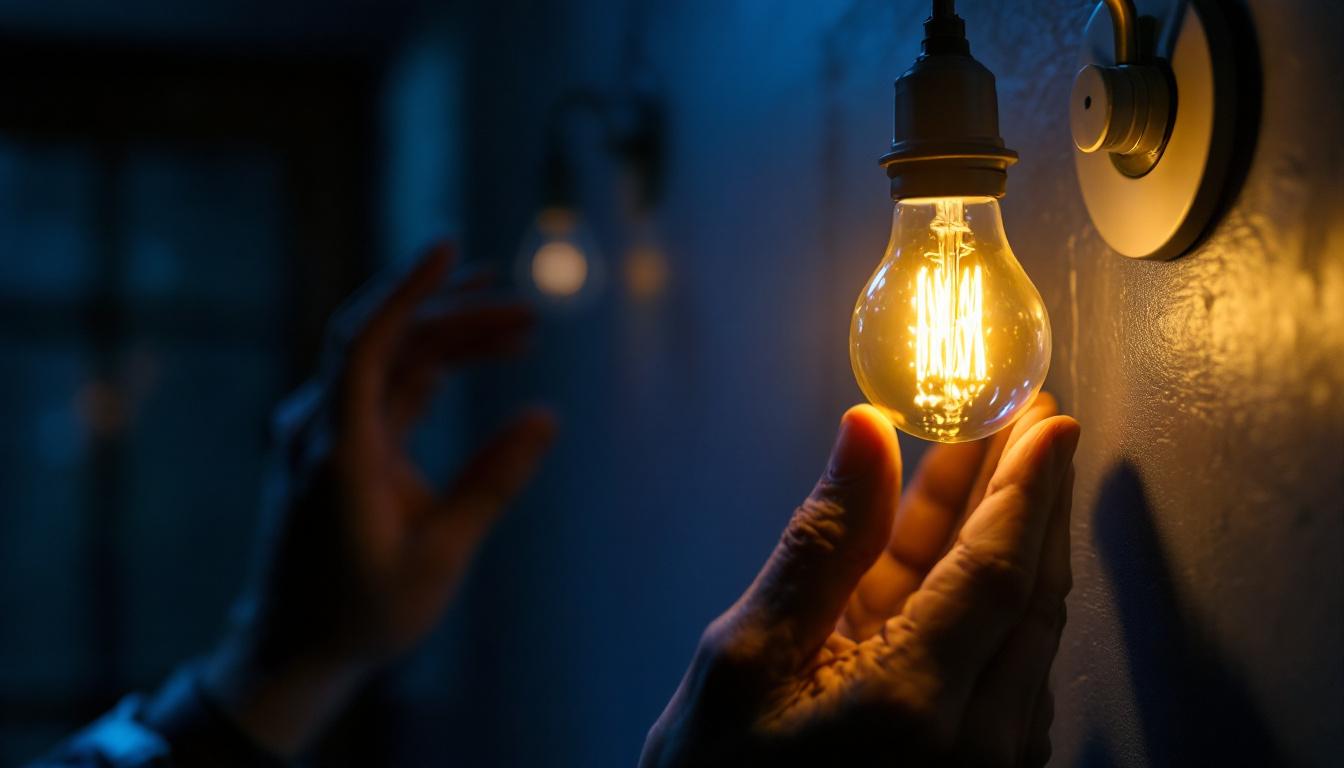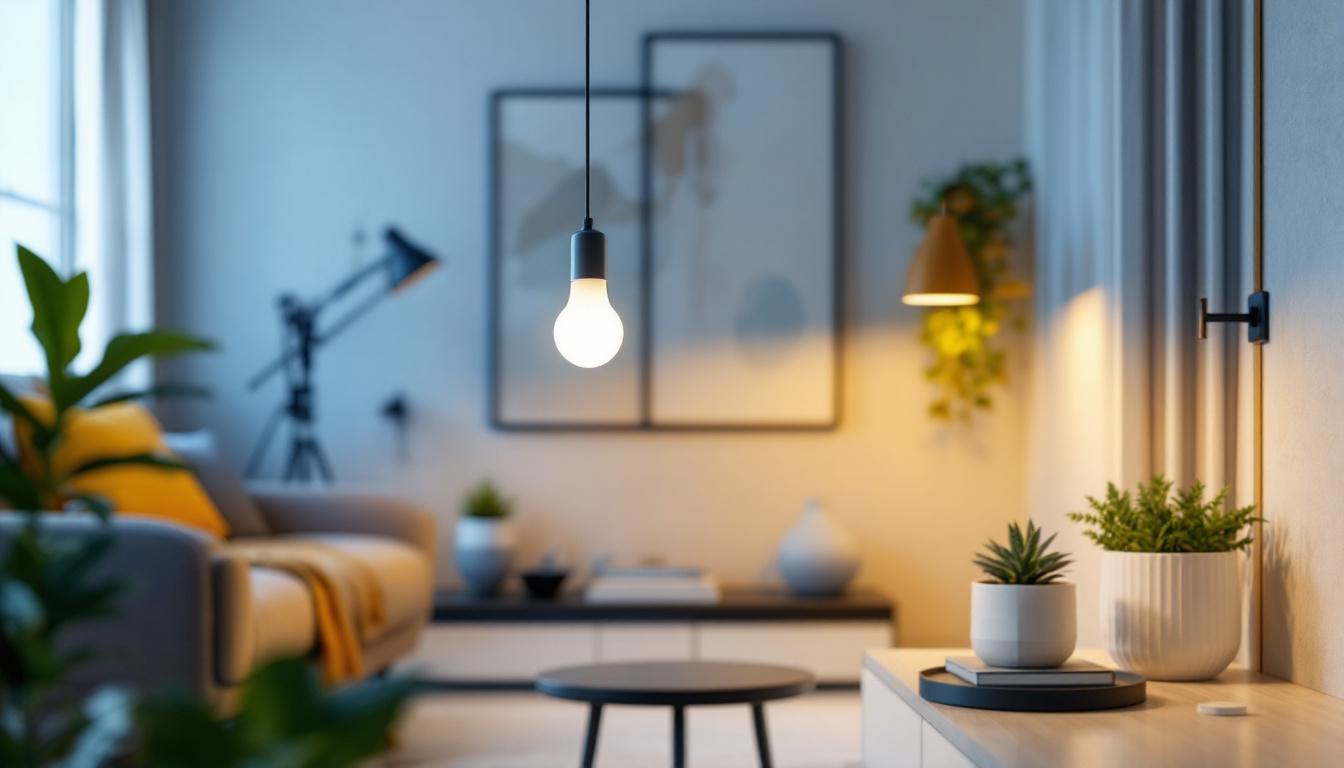
In the realm of lighting installation, the quality and type of electrical materials used can significantly influence the outcome of a project. From ensuring safety and compliance with regulations to enhancing the overall aesthetic appeal of a space, the right electrical materials play a crucial role. This article delves into the various aspects of electrical materials and how they can elevate lighting installation projects to new heights.
Quality electrical materials are the backbone of any successful lighting installation project. They not only ensure the longevity and reliability of the installation but also contribute to the safety and efficiency of the electrical system.
Safety is paramount in any electrical installation. Using substandard materials can lead to electrical failures, which may pose serious risks such as fires or electrocution. Adhering to local codes and regulations is essential, and high-quality electrical materials often come with certifications that guarantee their compliance with these standards. This not only protects the contractor but also instills confidence in clients.
Moreover, using quality materials minimizes the risk of future liabilities. In the event of an incident, having documented evidence of compliance can be invaluable. It is essential for contractors to prioritize materials that meet or exceed industry standards. In addition, many insurance companies require proof of compliance with safety standards to process claims, making the use of certified materials not just a best practice but a necessity for financial protection.
Investing in high-quality electrical materials can lead to longer-lasting installations. Cheaper alternatives may save money in the short term but often result in increased maintenance costs and replacements down the line. For instance, using premium wiring and connectors can reduce the risk of wear and tear, ensuring that the lighting system remains functional for years to come.
Furthermore, durable materials can withstand environmental factors such as humidity, temperature fluctuations, and exposure to chemicals. This is especially important in outdoor installations or in areas with high moisture levels, where inferior materials may quickly degrade. Additionally, high-quality materials often feature advanced technologies, such as corrosion resistance and UV protection, which further enhance their lifespan. This not only protects the investment but also contributes to the overall efficiency of the electrical system, as well-maintained components operate at optimal performance levels, reducing energy waste and lowering utility bills.
Understanding the various types of electrical materials available is crucial for lighting contractors. Each type serves a specific purpose and contributes to the overall functionality and safety of the installation.
Wiring and cables are fundamental components of any electrical system. The choice of wire gauge, insulation type, and material can significantly affect the performance of the lighting system. For instance, low-voltage lighting systems often require specific types of wiring to ensure optimal performance and safety.
Using high-quality copper wires, for example, can improve conductivity and reduce energy loss. Additionally, selecting the appropriate insulation material can protect against moisture and heat, further enhancing the durability of the installation. Moreover, understanding the local electrical codes and regulations is essential when selecting wiring materials, as compliance ensures safety and reliability in the long run. Contractors should also consider the environmental impact of their choices, opting for eco-friendly materials whenever possible to promote sustainability within the industry.
Switches and dimmers are essential for controlling lighting levels and enhancing user experience. High-quality switches not only provide reliable performance but also contribute to the aesthetic appeal of the installation. Many modern switches come with advanced features, such as smart technology integration, allowing for greater control and customization.
Dimmers, in particular, can significantly improve energy efficiency by allowing users to adjust lighting levels according to their needs. This not only enhances comfort but also reduces energy consumption, making it a win-win for both contractors and clients. Additionally, the integration of smart home systems has revolutionized the way lighting is controlled, enabling users to operate their lights remotely via smartphones or voice commands. This level of convenience not only appeals to tech-savvy clients but also adds a layer of sophistication to any lighting installation.
Lighting fixtures and fittings are often the most visible components of a lighting installation. Choosing the right materials for fixtures can impact both functionality and aesthetics. For example, fixtures made from high-quality metals or durable plastics can withstand wear and tear while maintaining their appearance over time.
Additionally, energy-efficient fixtures, such as LED lights, have become increasingly popular due to their long lifespan and reduced energy consumption. Contractors should consider recommending these options to clients, as they not only save money on energy bills but also contribute to a more sustainable environment. Furthermore, the design of fixtures can greatly influence the ambiance of a space; therefore, selecting styles that complement the overall decor is essential. From sleek, modern designs to vintage-inspired pieces, the right fixtures can elevate the aesthetic appeal of any room while providing the necessary illumination. As trends evolve, staying updated on the latest designs and technologies in lighting fixtures is vital for contractors looking to provide innovative solutions to their clients.
The field of electrical materials is constantly evolving, with new innovations that enhance performance, safety, and sustainability. Staying informed about the latest developments can give contractors a competitive edge in the market.
Smart technology has revolutionized the way lighting systems are designed and installed. Many electrical materials now come equipped with smart features, allowing for remote control and automation. This integration enhances user convenience and can lead to significant energy savings.
For instance, smart switches and dimmers can be programmed to adjust lighting based on time of day or occupancy, ensuring that energy is used efficiently. Contractors who embrace these technologies can offer clients modern solutions that meet their evolving needs. Furthermore, the integration of smart sensors can facilitate adaptive lighting systems that respond to natural light levels, further optimizing energy use and enhancing the overall ambiance of a space. This trend not only appeals to tech-savvy consumers but also aligns with the growing emphasis on smart homes and buildings, making it a key area for contractors to explore.
As sustainability becomes a priority for many consumers, the demand for eco-friendly electrical materials is on the rise. Contractors can differentiate themselves by offering products that are made from recycled materials or that have a lower environmental impact.
Using energy-efficient lighting options, such as LED bulbs, not only reduces energy consumption but also minimizes waste. Additionally, selecting materials that are free from harmful chemicals can contribute to healthier indoor environments, appealing to environmentally conscious clients. Beyond lighting, the shift towards biodegradable insulation materials and low-VOC (volatile organic compounds) paints is gaining traction, providing contractors with a broader array of sustainable options. These innovations not only help reduce the carbon footprint of a project but also promote a healthier living space, as they contribute to better air quality and overall well-being for occupants. By staying ahead of these trends, contractors can position themselves as leaders in the green building movement, attracting clients who prioritize sustainability in their projects.
Choosing the right electrical materials for lighting installation projects requires careful consideration. Here are some best practices that contractors can follow to ensure they make informed decisions.
Every lighting installation project is unique, and assessing the specific requirements is crucial. Factors such as the type of space, intended use, and client preferences should all be taken into account. For instance, a residential project may prioritize aesthetics, while a commercial installation might focus more on functionality and energy efficiency.
By understanding the project requirements, contractors can select materials that align with the client’s vision and expectations, ultimately leading to a more successful outcome.
Building strong relationships with suppliers can provide contractors with valuable insights into the latest products and technologies. Suppliers often have extensive knowledge about the materials they offer, including their advantages and limitations. Consulting with them can help contractors make informed choices and stay ahead of industry trends.
Additionally, suppliers may offer training or resources that can enhance a contractor’s understanding of new materials, further improving their expertise in the field.
While budget constraints are a reality in many projects, it is essential to strike a balance between cost and quality. Opting for the cheapest materials may lead to higher long-term costs due to maintenance and replacements. Contractors should educate clients on the benefits of investing in quality materials, emphasizing the value they bring to the project.
Offering a range of options at different price points can also help clients make informed decisions without compromising on quality.
The choice of electrical materials is a pivotal aspect of lighting installation projects. By prioritizing quality, understanding the types of materials available, and staying informed about innovations, contractors can significantly enhance their projects. Moreover, adopting best practices for selecting materials can lead to safer, more efficient, and aesthetically pleasing installations.
Ultimately, the right electrical materials not only improve the functionality and safety of lighting systems but also contribute to client satisfaction and long-term success for contractors. By embracing these principles, lighting contractors can position themselves as leaders in the industry, ready to tackle any project with confidence.
Ready to elevate your lighting installation projects with the finest electrical materials? Look no further than LumenWholesale, where we provide contractors with exceptional, spec-grade lighting products at wholesale prices that can’t be beaten. Say goodbye to unnecessary markups and hello to a vast selection of industry-standard lighting solutions that promise reliability and high performance. With the added benefits of free shipping and bulk buying made easy, LumenWholesale is your go-to source for premium lighting that merges quality with affordability and convenience. Don’t compromise on your next project—choose Wholesale Lighting at the Best Value and partner with us for success.

Discover the transformative impact of floor lighting on your installation projects.

Discover the causes behind flickering light bulbs and explore the advantages and challenges lighting contractors face when addressing this common issue.

Explore how dusk until dawn lights revolutionize energy efficiency by automatically adjusting to natural light conditions.

Discover how to future-proof your lighting projects with intermediate base light bulbs.